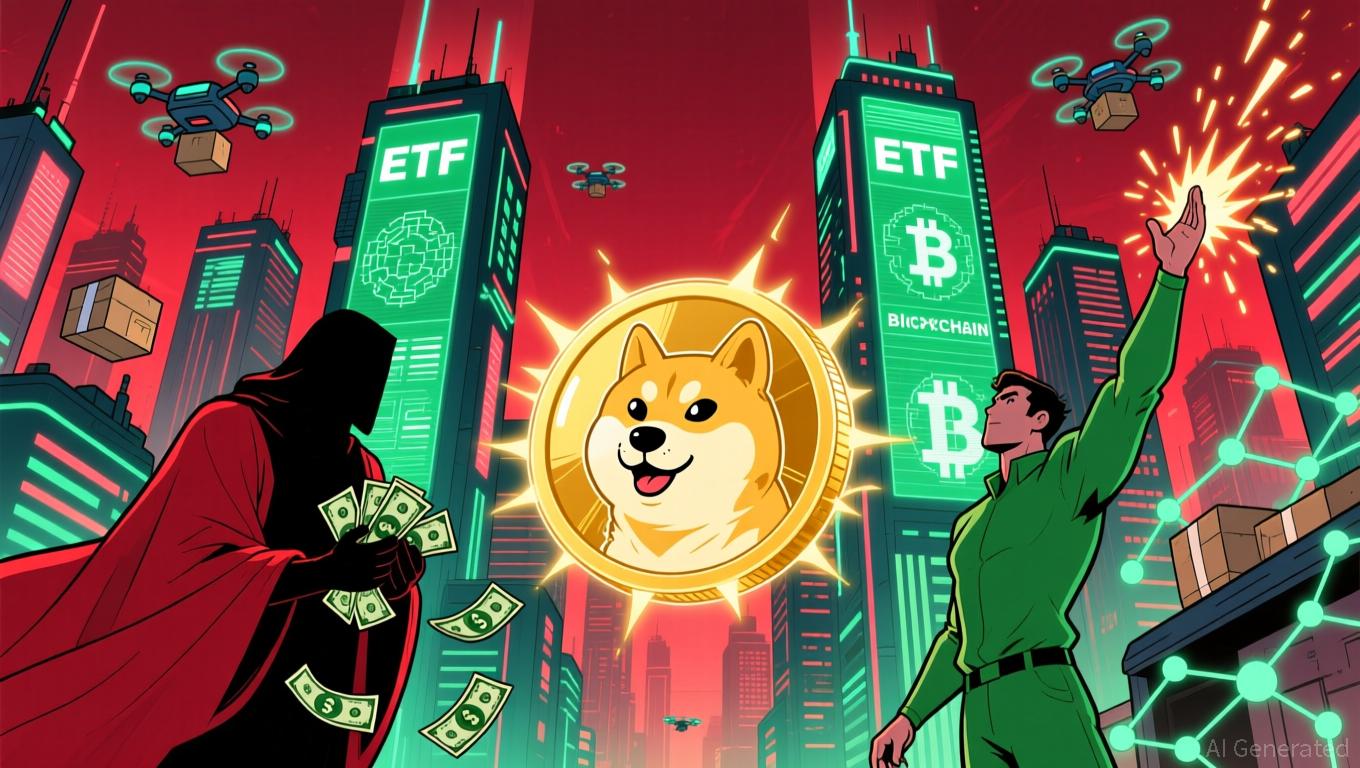Here's How Digital Asset Treasuries are Holding Up as Prices Trend South
The crypto market’s sustained downturn since mid-October has had a deep impact on digital asset treasury stocks and their holdings, with its latest slump triggering nearly $1 billion in liquidations in an hour as Bitcoin dipped below $82,000 Friday morning.
The crypto market decline has had a two-fold impact on digital asset treasuries. The stock price of these major public companies has tanked as sentiment declines. Additionally, the unrealized losses from holding crypto have skyrocketed.
The stock price of Strategy, the company that invented the digital asset treasury playbook, has spiraled over the past year. Still, its crypto hoard is sitting at $7.48 billion in unrealized gains. In a Friday tweet, the firm struck an optimistic note, stating that at current Bitcoin levels, it has “71 years of dividend coverage assuming the price stays flat.”
On prediction market Myriad, owned by Decrypt's parent company Dastan, users place just a 6% chance on Strategy selling any of its Bitcoin holdings before year's end.
Other big names running the DAT playbook have seen their unrealized crypto losses grow considerably over the past month or so.
BitMine Immersion Technologies is a prime example. The entity’s Ethereum holdings are sitting at an unrealized loss of approximately $4.44 billion, according to Bitmine Tracker. Metaplanet and SharpLink are down roughly $682 million and $695 million on their Bitcoin and Ethereum holdings, respectively, according to CoinGecko data. Galaxy Digital and Forward Industries also hold significant paper losses in their diversified crypto portfolios, including Bitcoin, Ethereum, Solana, and Hyperliquid.
The plunging valuations of these DATs have compressed a key financial metric, pushing their market-cap-to-net-asset-value (mNAV) ratios below 1.
BitMine (BMNR) trades at a 0.73x mNAV, while SharpLink and Forward Industries trade at 0.82x and 0.74x, respectively.
“Currently, digital asset treasuries are living in two realities,” Armando Aguilar, head of capital formation at the global Bitcoin yield protocol TeraHash, told Decrypt. “On paper, their holdings’ value has dropped sharply, and their market caps have followed. In practice, most of these companies can still operate because they have enough cash to cover operations. At least for now.”
The critical question is how sustainable this position is if prices continue to fall. When mNAV falls below one, it becomes harder for companies to raise cash by offering equity, increasing the pressure to find other sources of liquidity, experts told Decrypt in a previously published report.
“When a company trades far below the value of the assets it holds, pressure slowly increases,” Aguilar explained. “Investors ask questions about whether the strategy makes sense at all, so raising new capital gets harder.”
“Forced selling is unavoidable only when a firm can no longer fund operations or convince the market to support its long-term plan,” Aguilar said. Although a few DATs are close to that point, the analyst said, he tempered his take by adding that “the group overall hasn’t yet faced an immediate liquidation risk.”
However, if multiple DATs are pushed to sell, the impact would extend beyond their own balance sheets, catalyze “a steady source of downward pressure, not a sudden shock,” on the crypto markets, Aguilar said.
The ultimate recovery for these DATs depends on the resolution of macro uncertainty, experts previously told Decrypt. Such a scenario would catalyze a recovery in risk-on assets, including Bitcoin, potentially improving overall investor sentiment and attracting capital inflows.
Disclaimer: The content of this article solely reflects the author's opinion and does not represent the platform in any capacity. This article is not intended to serve as a reference for making investment decisions.
You may also like
Bitcoin Updates: ETF Outflows Push Bitcoin to Lowest Point in Seven Months Amid Market Turmoil
- Bitcoin fell below $83,400, its lowest in seven months, as U.S. spot ETFs saw $3.79B in November outflows, led by BlackRock’s $2.47B loss. - Record $903M single-day ETF redemptions accelerated crypto and equity market selloffs, with Nvidia and crypto stocks dropping sharply. - Ethereum ETFs lost $1.79B, while altcoin funds like Bitwise’s XRP gained $105M, reflecting shifting investor preferences amid liquidity concerns. - Analysts attribute the selloff to macroeconomic uncertainty and delayed Fed rate cu

Dogecoin News Today: Grayscale DOGE ETF Debut May Trigger a Wave of Institutional Interest This November
- Grayscale's DOGE ETF launches Nov 24, aiming to boost institutional adoption of the meme coin amid SEC approval. - BlockDAG's $436M+ presale outpaces ADA/BCH, leveraging hybrid PoW-DAG tech and 3.5M miners to attract 312K holders. - Ethereum faces $2,850 support pressure after FG Nexus sells 11,000 ETH, triggering $170M in 24-hour liquidations. - DOGE hovers near $0.15 support with mixed technical signals, while ETF optimism contrasts with ongoing distribution trends.

ZK Atlas Enhancement: Leading the Way in Blockchain Expansion and Enterprise Integration
- ZKsync's 2025 Atlas Upgrade resolves blockchain scalability trilemma via modular architecture, achieving 15,000–43,000 TPS with 1–500ms finality. - Institutions like Deutsche Bank adopt ZKsync for cross-chain settlements, while TVL in ZK ecosystems hits $3.5B and ZK token price rises 50%. - Compliance features and EVM compatibility address institutional needs, with $15B in Bitcoin ETF inflows accelerating adoption of tokenized assets and RWAs. - Analysts project 60.7% CAGR for ZK Layer-2 solutions throug
ZK Technologies' Price Soars: The Intersection of Major Scalability Advances and Growing Institutional Interest
- ZK Technologies surged to $0.085–$0.090 in late 2025, driven by ZK rollup innovations and institutional adoption. - ZK rollups achieved 15,000 TPS by October 2025, with Ethereum's EVM optimization reducing proof costs 50-fold. - Deutsche Bank , Sony , and Citibank adopted ZK-rollups for confidential settlements and cost-efficient transactions. - Deflationary token model and fee buybacks increased scarcity, driving demand and value accrual. - ZK-based solutions now address scalability and privacy, becomin
